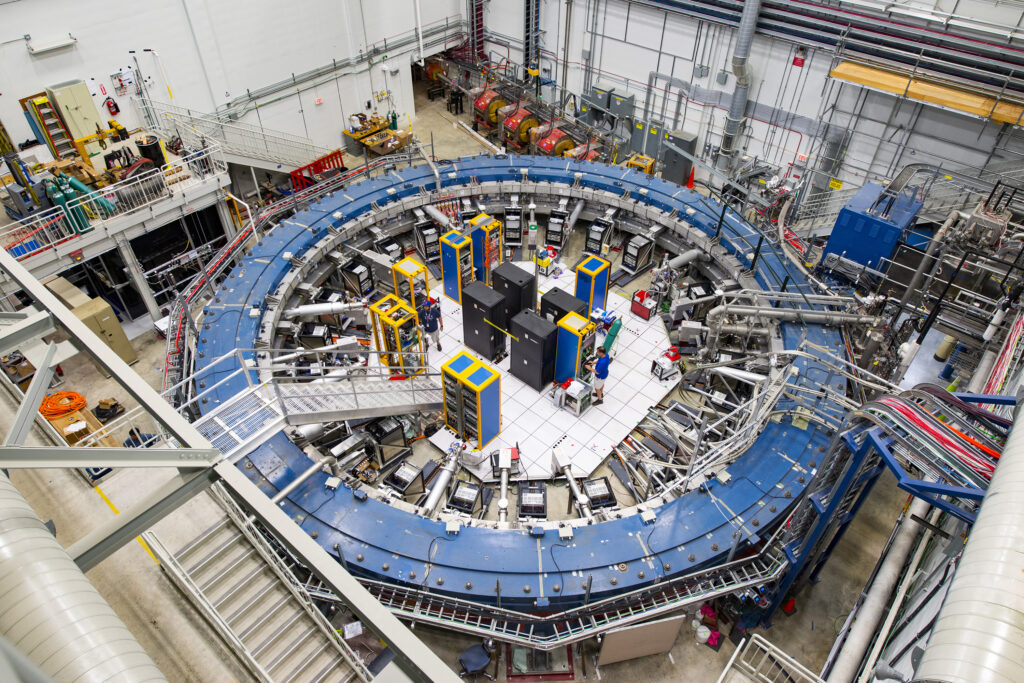News media around the world have been inundated with reports of a recent discovery in Fermilab which could hint to a new revolution in physics.
Much-anticipated data from the Muon g-2 experiment provides tantalising evidence that muons are not behaving in the way they are supposed to according to the Standard Model of particle physics.
Scientists from the Cockcroft Institute, funded by the Science and Technology Facilities Council, have played an important role in the Muon g-2 experiment.
The experiment searches for signs of new particles and forces by measuring the magnetic moment of the muon with unprecedented precision. When placed in a magnetic field, the muon rotates at a certain frequency as a consequence of its magnetic moment, which can be calculated using the Standard Model. However, the g-2 collaboration has measured this rotation to be faster than predicted – providing experimental evidence of Beyond the Standard Model (BSM) physical phenomena.
This result has been anticipated for over a decade, since a measurement published in 2006 from an experiment at Brookhaven National Lab stood at odds with the Standard Model. The new result from Fermilab pushes the precision of the experiment into uncharted territory in the quest to confirm or refute that finding.

Muon g-2 is an international collaboration between Fermilab and dozens of labs and universities in seven countries, including the UK. The UK collaboration comprises the universities of Lancaster, Liverpool, Manchester, and UCL as well as the Cockcroft Institute.
Dr Ian Bailey, from the Cockcroft Institute / Lancaster University has led the development of novel computer simulations to investigate the motion of the muons.
Dr Bailey, said: “The high sensitivity of the Muon g-2 experiment is achieved by combining precision measurements and simulations from particle physics, accelerator physics and nuclear physics. Simulations developed by the Cockcroft Institute were used to improve the understanding of the distribution and polarization of the muons being injected into the main muon storage ring, and the motion of the muons circulating in the dipole field of the ring and focussed by curved electrostatic quadrupoles. Unlike typical particle collider experiments, these details are essential to calculating the leading systematic uncertainties on the published measurements, and will continue to be important as more data is analysed and the statistical uncertainty on the measurement decreases.
A new generation of precision experiments, that include the Fermilab Muon g-2, break down the traditional distinction between accelerator physicists and particle physicists, and present exciting challenges for everyone involved.”
The Cockcroft Institute Director Professor Peter Ratoff added: “We are extremely pleased that the Institute has been able to contribute to the tremendous success of the muon g-2 project at Fermilab. The accelerator physics challenges were substantial and it is difficult to identify many other particle physics measurements that have depended quite so directly on the detailed understanding of the beam dynamics of the machine delivering the science”.
These new results were released in a seminar on 7th April, and published in Physics Review Letters.
